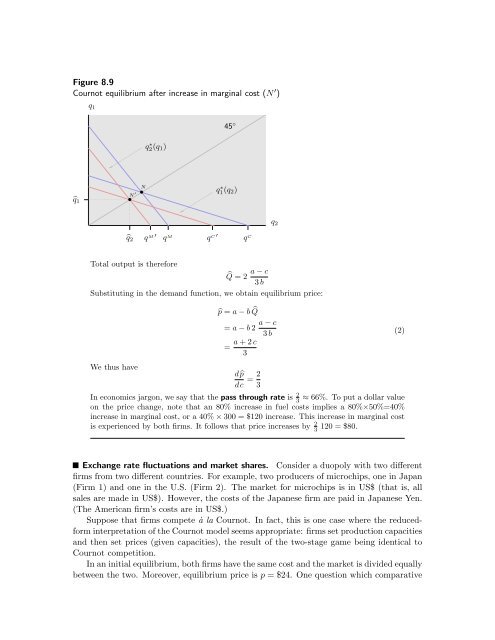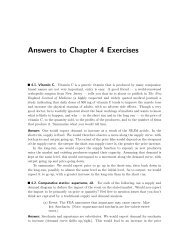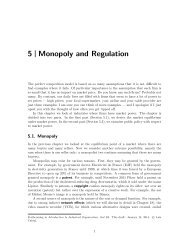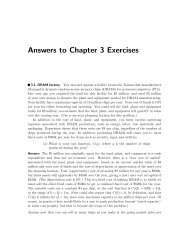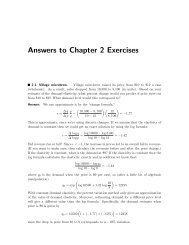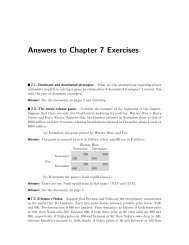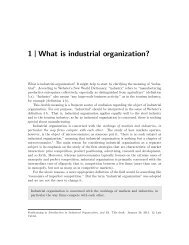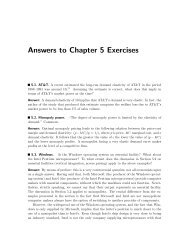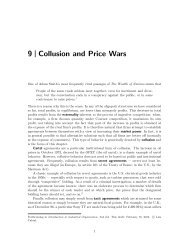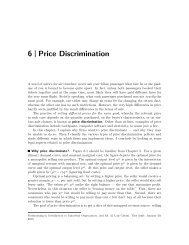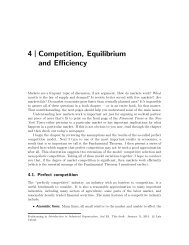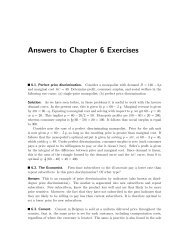8 Oligopoly - Luiscabral.net
8 Oligopoly - Luiscabral.net
8 Oligopoly - Luiscabral.net
Create successful ePaper yourself
Turn your PDF publications into a flip-book with our unique Google optimized e-Paper software.
Figure 8.9<br />
Cournot equilibrium after increase in marginal cost (N ′ )<br />
45 ◦<br />
. .<br />
N ′ q ∗ 2(q 1 )<br />
• •N<br />
q ∗ 1(q 2 )<br />
̂q 1<br />
̂q 2 q M ′<br />
q M q C ′<br />
q C<br />
q 1<br />
.... .... .... .... .... ... .... ... ... ... ... .... .... .<br />
.......<br />
q 2<br />
. .<br />
Total output is therefore<br />
̂Q = 2 a − c<br />
3 b<br />
Substituting in the demand function, we obtain equilibrium price:<br />
We thus have<br />
̂p = a − b ̂Q<br />
= a − b 2 a − c<br />
3 b<br />
= a + 2 c<br />
3<br />
d ̂p<br />
dc = 2 3<br />
In economics jargon, we say that the pass through rate is 2 3<br />
≈ 66%. To put a dollar value<br />
on the price change, note that an 80% increase in fuel costs implies a 80%×50%=40%<br />
increase in marginal cost, or a 40% × 300 = $120 increase. This increase in marginal cost<br />
is experienced by both firms. It follows that price increases by 2 3<br />
120 = $80.<br />
(2)<br />
Exchange rate fluctuations and market shares. Consider a duopoly with two different<br />
firms from two different countries. For example, two producers of microchips, one in Japan<br />
(Firm 1) and one in the U.S. (Firm 2). The market for microchips is in US$ (that is, all<br />
sales are made in US$). However, the costs of the Japanese firm are paid in Japanese Yen.<br />
(The American firm’s costs are in US$.)<br />
Suppose that firms compete à la Cournot. In fact, this is one case where the reducedform<br />
interpretation of the Cournot model seems appropriate: firms set production capacities<br />
and then set prices (given capacities), the result of the two-stage game being identical to<br />
Cournot competition.<br />
In an initial equilibrium, both firms have the same cost and the market is divided equally<br />
between the two. Moreover, equilibrium price is p = $24. One question which comparative


